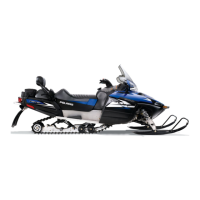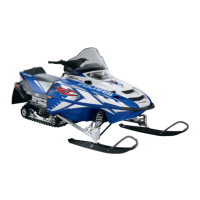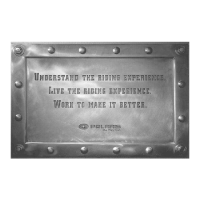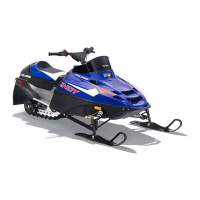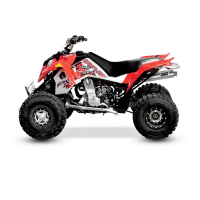4.10
Fuel Systems
FUEL PUMP
Fuel Pump Overview
The impulse-powered fuel pump on carbureted engines works
by using the positive and negative pressure pulses generated by
the movement of the pistons inside the engine crankcase.
When the MAG piston is on the upward stroke, negative
(vacuum) pressure pulse is applied to the fuel pump. This action
draws fuel into the pump from the fuel tank.
When the MAG piston is on the downward stroke, a positive
pressure pulse is applied to the fuel pump. This action forces
fuel from the intake-side of the pump to the supply-side, then to
the carburetors.
A series of check valves prevents fuel from being drawn out of
the carburetors on the vacuum stroke or forced back into the fuel
tank during the pressure stroke.
Maintenance
The impulse operated-powered fuel pump does not require any
specific scheduled maintenance. However, the following
procedures should be observed:
•Operation
The pump may be checked for operation by removing the fuel
supply line from the carburetor and placing it into a container.
With the engine idling at approximately 2000 RPM, a steady
flow of fuel should be visible.
• Cleaning
The impulse line must be disassembled and cleaned of foreign
material in the event of piston or other internal engine part
failures which produce fragments.
• Inspection
Disconnect impulse line from pump. Connect a Mity Vac to
impulse fitting (or line) and apply 4-6 PSI pressure. Diaphragm
should hold pressure indefinitely.
FUEL IN (FROM TANK)
IMPULSE HOSE FITTING
(ALWAYS ON BACK OF PUMP)
FUEL OUT

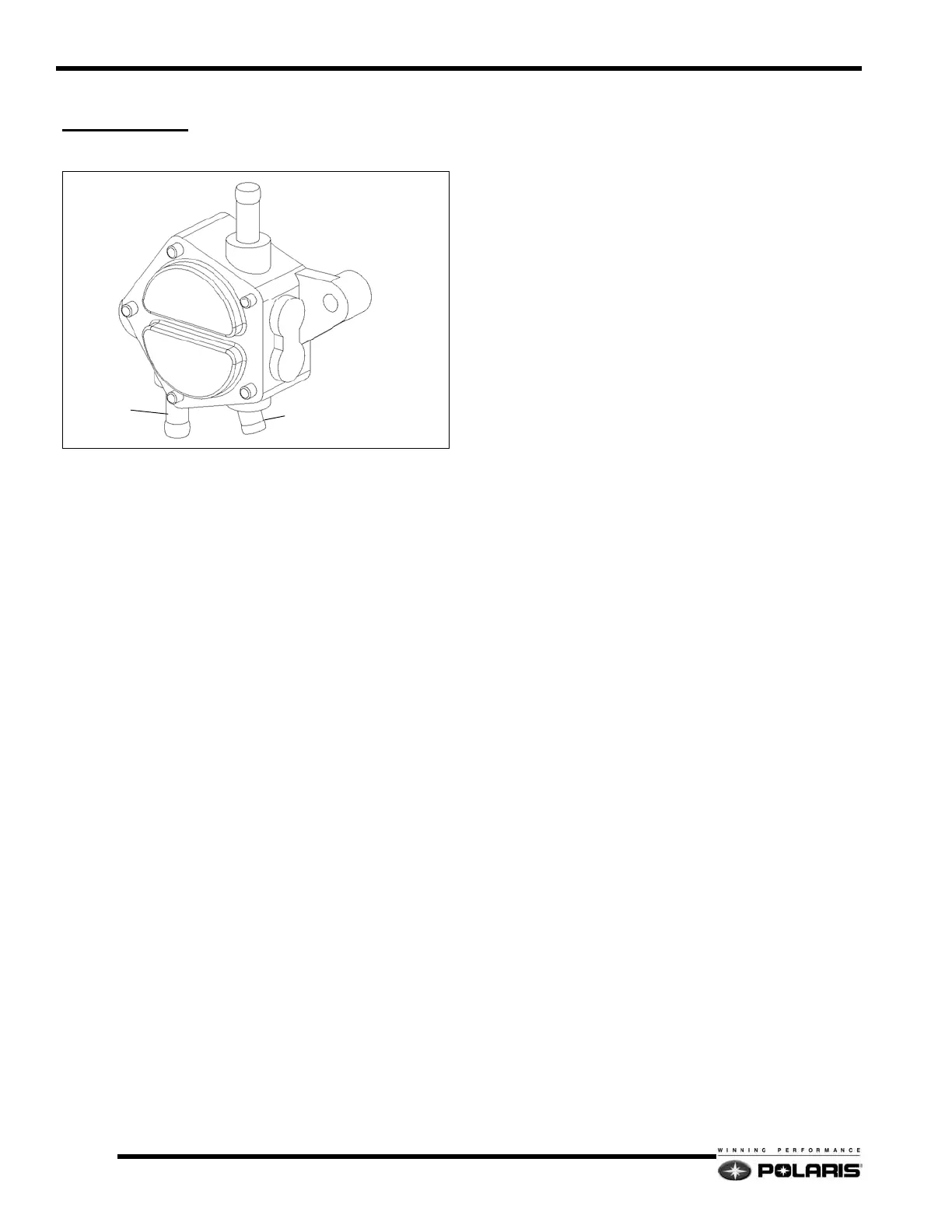